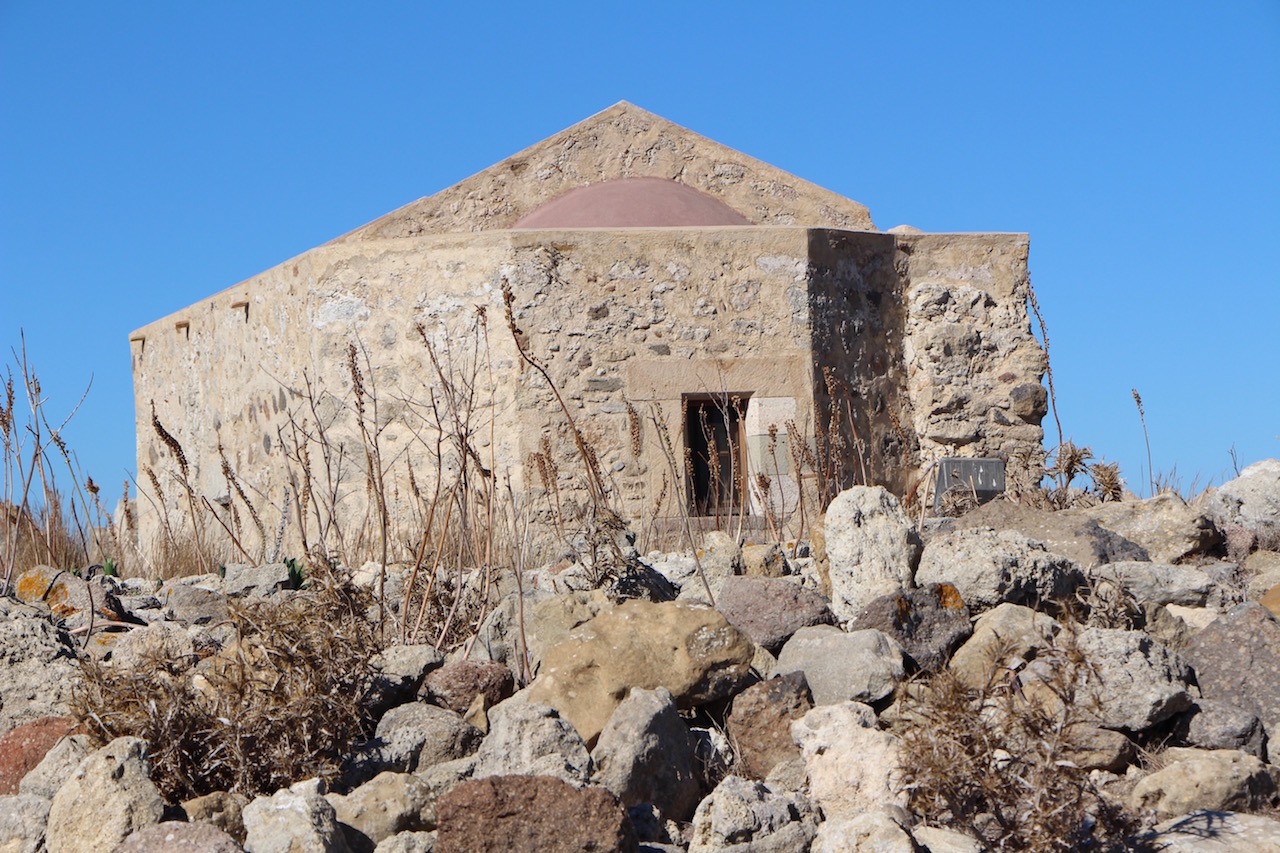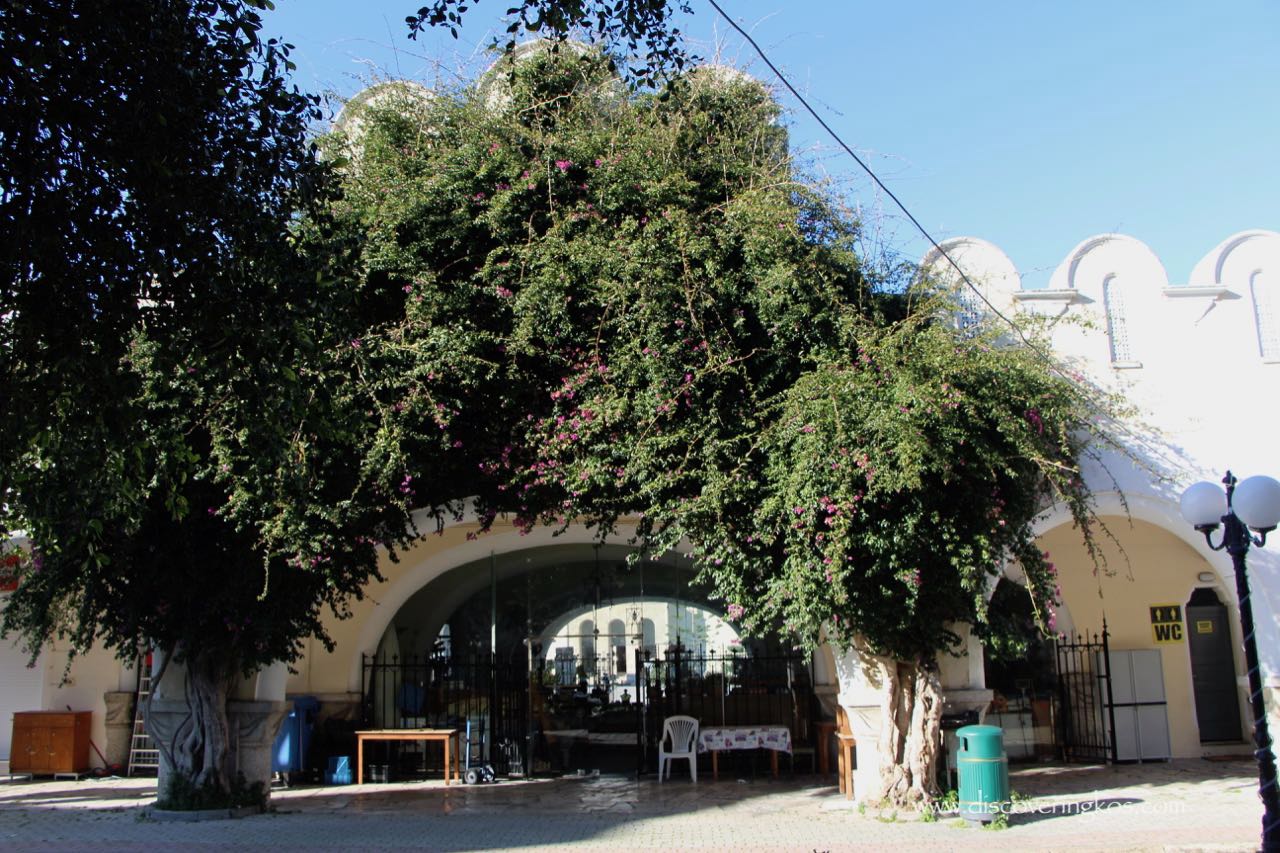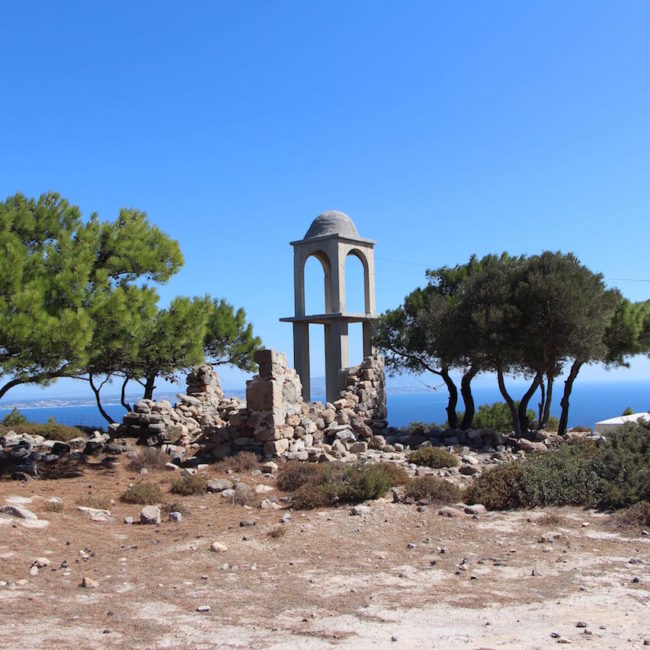Inside the medieval castle of Antimachia you will find the Church of Aghios Nikolaos which was built in the beginning of the 16th century, probably around 1520. The floor is covered by clay plaques. Its walls are adorned by some beautiful murals which you can still discern quite clearly. A walled-in marble slate with three knight coats of arms, one of which dates from 1520 and belongs to Grand Master Del’ Carretto, can be seen on the lintel of its entrance. A large and deep cistern lies in its adjoining courtyard. The church of Aghios Nikolaos is rarely used as a place of worship although the structure remains very solid.



















